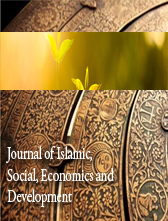ANALYSING THE EXPRESSIVE CULTURE OF TELEPUK TEXTILE AS MALAY MATERIAL CULTURE HERITAGE
Abstract
The production of textiles in general is due to the human basic need to dress and protect them from environmental factors such as temperature. Textiles is a form of material culture being produce in the development of Malay art and craft. In certain point, telepuk textiles almost being forgotten, although, recently there have been several efforts to reintroduce this art through workshops and newest publication of books. However, many people did not recognize the art of telepuk, probably this art was produced for royalty, used on certain palace occasions and in addition, the complexity of the production of this textile may involve extension processes which involve very high costs that only the rich can afford and commissioned telepuk production. Even so, this art should be maintained and preserved because due to its values of cultural expression that symbolizes the height of Malay art knowledge. This study will analyse few samples of telepuk collection exhibited in the National Textile Museum, Kuala Lumpur. The research method used in studying the contextual interpretation is based on cultural formation theory by Edward B. Taylor and Islamic concept and principles of Malay Aesthetic by Zakaria Ali through observation to evaluate the cultural expression from the aspect of functionalism and aesthetic. The finding of the study will be able to understand the factors that influence the Malays in shaping their philosophy of Malay art. The connection of traditional cultural practices and beliefs of the Malays in the production of this textile to unravel the value of this cultural expression.













